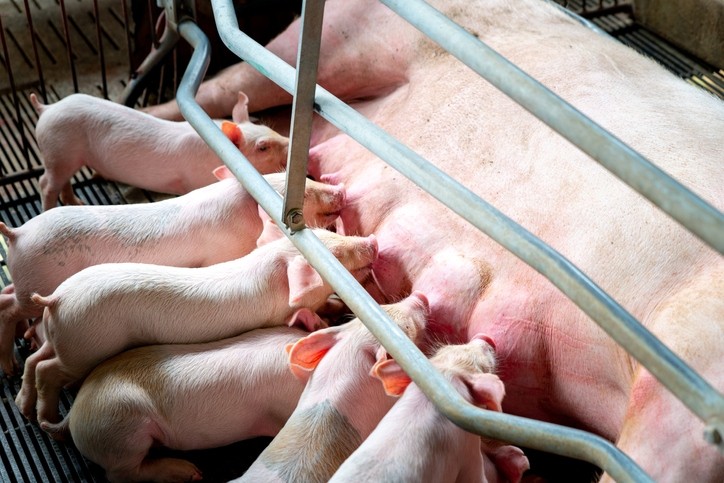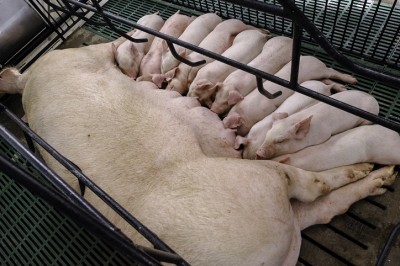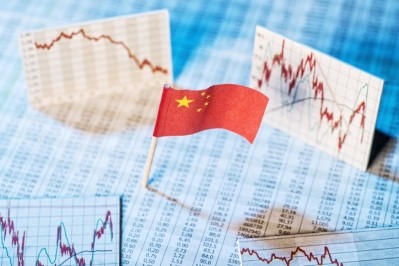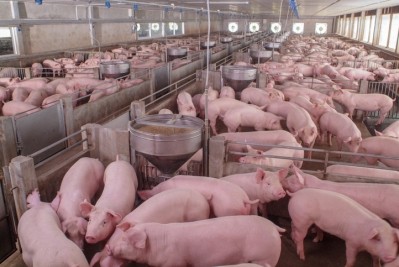Feed economics drive Scandinavian Farms pig genetics decisions

“After seven years of pig production in China, I found that the genetics we had were not the best for the conditions here. It is a different climate to Denmark, especially the warm, humid summer period. Feed prices are also pretty high, which is why FCR [Feed Conversion Ratio] is very important,” Jørgen Lindberg, CEO of Scandinavian Farms, told FeedNavigator.
Scandinavian Farms was created in 2013 in China to establish pig farms that would operate to Danish standards.
Originally, the company established a nucleus herd with 1,600 DanBred sows, as well as a production herd with 14,000 sows, producing 350,000 slaughter pigs annually.
However, Scandinavian Farms recently took the decision to switch to breeding stock from Genesus, which Lindberg says has “a very good reputation and market share in the Chinese market”.
Survival of the strongest
Genesus claims to produce stronger piglets that are better suited to conditions in China.
“We have had good results in China. Our animals are strong and easy to manage and do well in hot and humid conditions. DanBred has a very high birth rate, but our pigs are stronger and survive better. You don’t get paid on pigs weaned but on kilograms sold,” said Mike Van Schepdael, vice president of Genesus.
Lindberg concurred with this reasoning, saying: “For me it’s important that the piglet that is born will also end up at the slaughterhouse, with a low production cost. If there are too many weak piglets born, due to a very large litter size, some of these will not make it to the slaughterhouse, and if they do, they will have cost too much getting there.”
He said feed efficiency is particularly important in China owing to the high cost of feed – Lindberg estimates feed costs to be 60% higher than in Denmark.
“The price of corn, wheat, barley and other raw materials for feed is very high here. High import duties are in place to protect the income of small farmers,” explained Lindberg.
Scandinavian Farms is currently in the process of repopulating, after taking delivery of 700 nucleus sows from Genesus Nucleus Farms in the UK.
Lindberg said it would be importing 600 more Genesus sows for its nucleus herd.
The farm’s production capacity is 14,800 sows, which can produce 50,000 breeding animals and 370,000 finisher pigs.
“Our Genesus production herd will continue to improve on its genetics under a joint breeding program and the opportunity to access the frozen semen every year from the Genesus nucleus herd,” said Lindberg.
Market context
The Chinese pig industry satisfies almost 50% of global demand for pork and has transformed in the last 10-15 years from backyard production to large-scale production in modern, world-class facilities.
However, since Scandinavian Farms entered the market in 2013, it has experienced tumultuous times.
According to Lindberg, hog output has gradually decreased from 735m in 2014 due to a mass exodus of smaller producers from the market, following the requirements imposed by China’s new Environmental Protection laws. He said this decline was accelerated by the appearance of African swine fever (ASF) in 2018, with production dropping down to 544m in 2019, sending pork prices soaring.
The Chinese Government intervened with a series of policies to support the expansion of production capacity, and pig and production sow inventory have both maintained a rapid recovery since, he said. The country’s sow inventory rose for seven consecutive months from October and at the end of Q1, stood at 33.81m, according to the official website of the China's ministry of agriculture and rural affairs (MARA). The commercial live pig inventory also rose for three consecutive months at the start of the year and was reported to be at 321.2m at the end Q1 2020.













